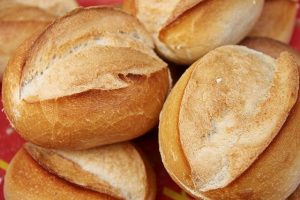
Photo credit: Pexels
DASH diet is a diet plan primarily made for people who have problems with hypertension, or high blood pressure. It is a diet that mainly dictates portion size and nutrition intake to accomplish desired results.
Even though, as we said above, it is for people with high blood pressure, it can help everyone to get on the right track when it comes to losing weight. It starts by limiting the intake of sodium while introducing more foods which contain potassium, calcium, and magnesium, which all help battle hypertension.
It will help you make a drastic change in blood pressure during two weeks, but it will also benefit your body in many other ways. Since DASH is a healthy diet plan which introduces numerous beneficial foods, it can help you prevent osteoporosis, stroke, diabetes, cancer and heart disease, of course only if you stick to it.
DASH Sodium Levels
According to certain studies, average person intakes about 3400mg of sodium a day, which is a lot, to say the least. Since sodium is one of the main reasons for hypertension, DASH focuses on that, and standard version allows you to intake approximately 2300mg of sodium a day. However, if you want to get even better results, you should follow DASH with an extra limited sodium intake of just 2500mg a day. If you’re unsure which one to follow, consult your doctor.
DASH Menu
Whichever version you choose, you’ll have to include a lot of whole grains, vegetables, fruit and dairy products. You should also eat fish, poultry, legumes, and nuts and seeds while limiting the intake of fats.
Grains: six to eight portions a day
This includes whole grain bread and brown rice. The portion is, for example, one slice of whole grain bread, or one cup of brown rice. Make sure you focus on whole grains since they contain more fiber and other nutrients compared to refined grains. Look for a 100% whole grain label.
Vegetables: four to five portions a day
Tomatoes, carrots, broccoli and sweet potatoes are just a few examples of very healthy and beneficial vegetables. One portion includes one cup of leafy greens or half of cup of cooked vegetables. Add vegetables to brown rice and make a full meal out of it, but be careful when choosing the frozen kind and pay attention to sodium levels.
Fruit: four to five portions a day
Just like vegetables, fruit is also nutrient rich. One portion includes one fruit, like an apple, or half of cup of fresh, or frozen fruit. You have to pay attention to few things. Eat fruit between the meals or as a dessert, and eat it without peeling whenever possible.
Dairy products: two to three portions a day
As we all know by now dairy products are a great source of protein, calcium, and vitamin D. However, make sure you always pick a low-fat variety. One portion includes a cup of milk, yogurt, or 40g of low-fat cheese.
Lean meat, poultry, and fish: six or fewer portions a day
Meat can be a great source of protein, vitamin B, iron, and zinc, however, always stick to a lean meat and don’t eat more than 170g a day. Always try to lower the intake of meat while increasing the intake of vegetables. Also, focus on fish since it is healthiest.
Nuts, Seeds, and Legumes: four to five portions a week
Everything listed above is a great source of magnesium, potassium as well as protein. However, since they are high in calories, the goal is to consume them only a few times a week. One portion includes a third of a cup of nuts, 2 tablespoons of seeds, and half of cup of beans or peas.
Fats: two to three portions a day
Fats help the body absorb essential vitamins and minerals, and they are good if we consume them moderately. DASH limits the intake of fats and recommends monounsaturated fats instead. The portion includes one teaspoon of butter or mayonnaise.
Sweets: five portions or less a week
DASH doesn’t prohibit sweets, but you still have to be moderate. One portion includes one teaspoon of sugar, jelly or marmalade. Always make sure you pick low-fat versions.
Caffeine
Caffeine should be avoided altogether since it can increase the blood pressure. As we mentioned in one of our previous articles, caffeine can also prevent weight loss.



